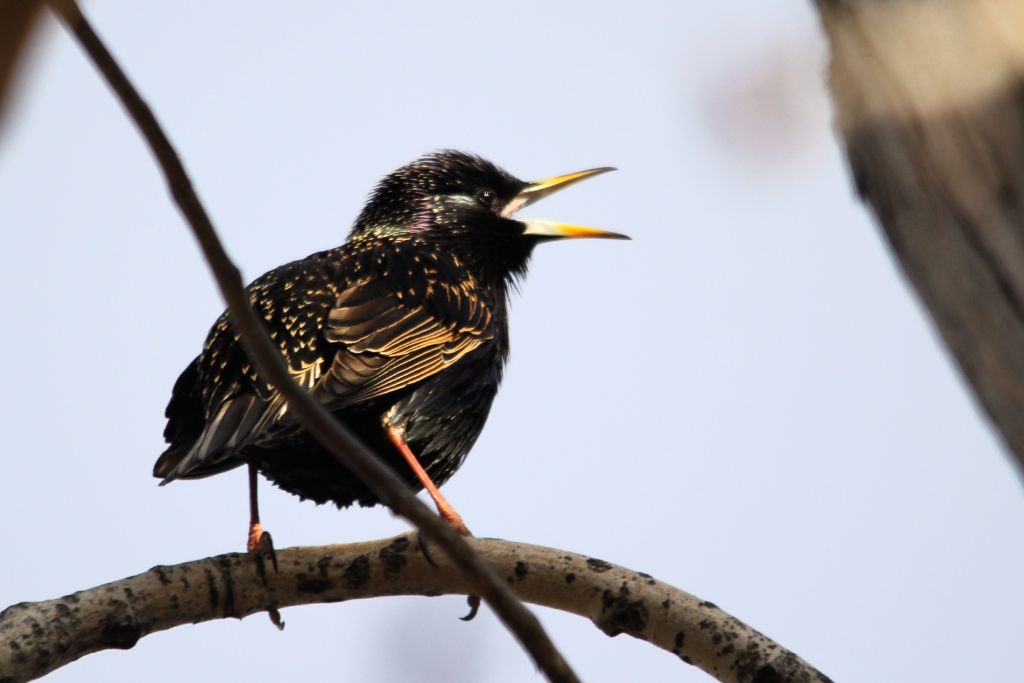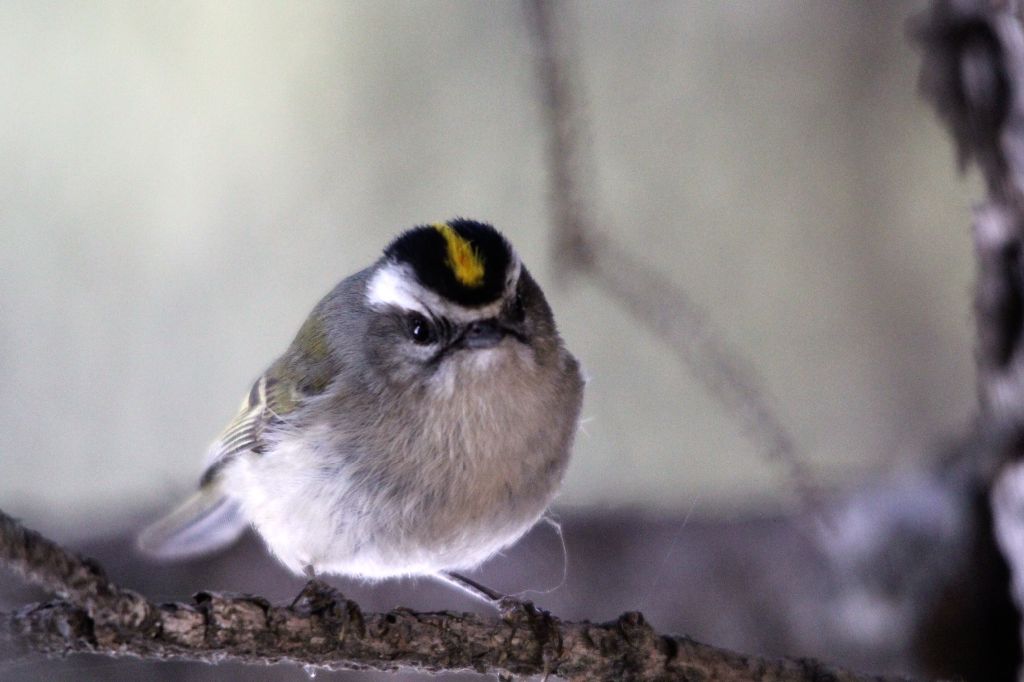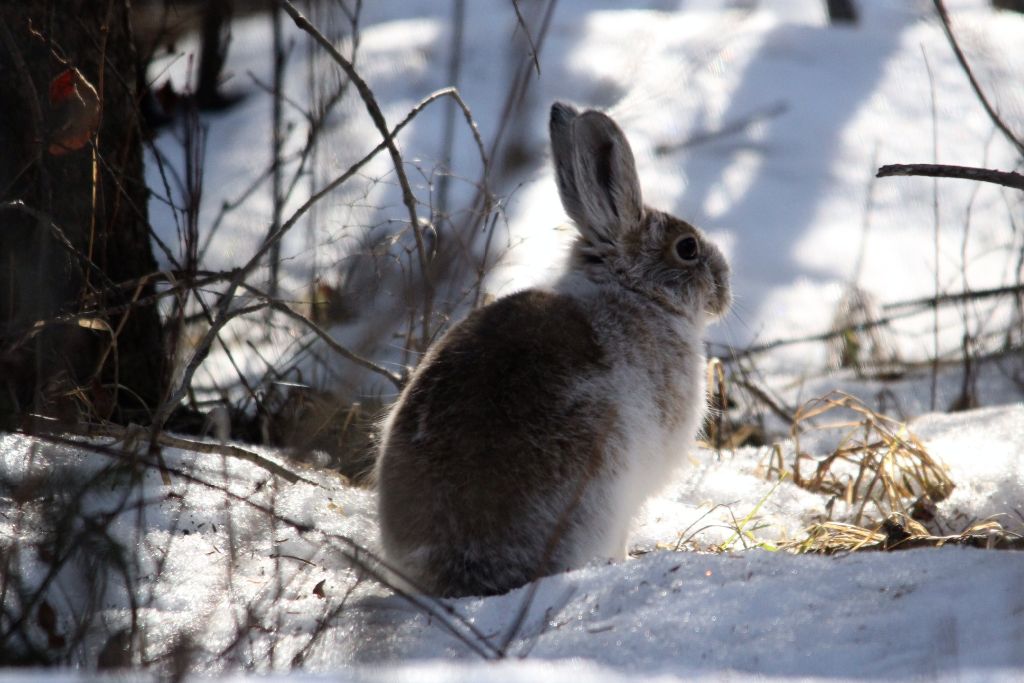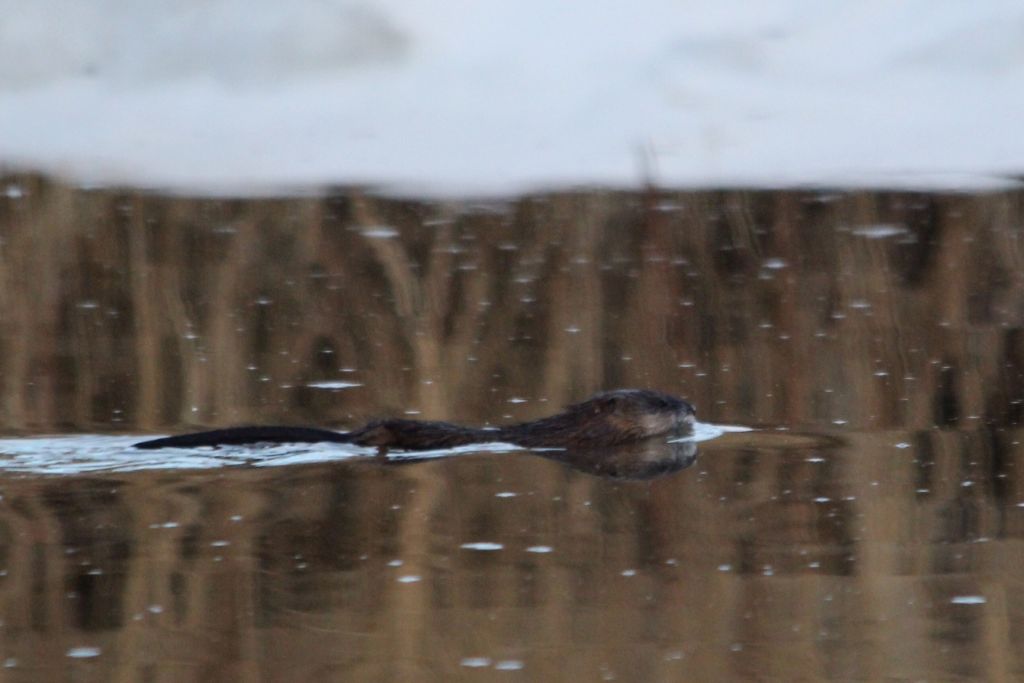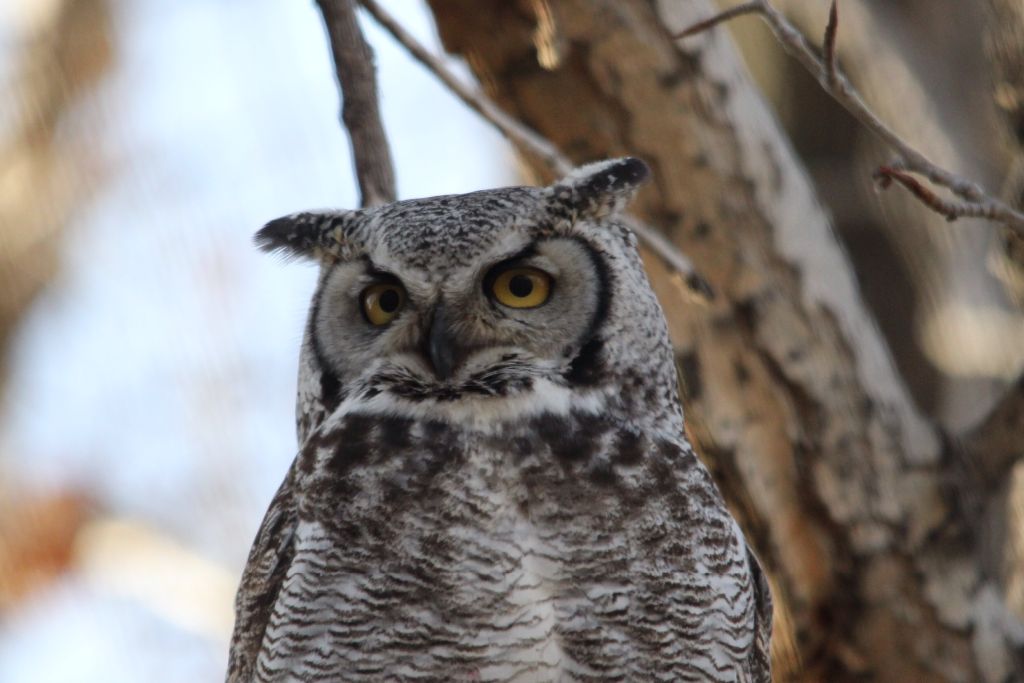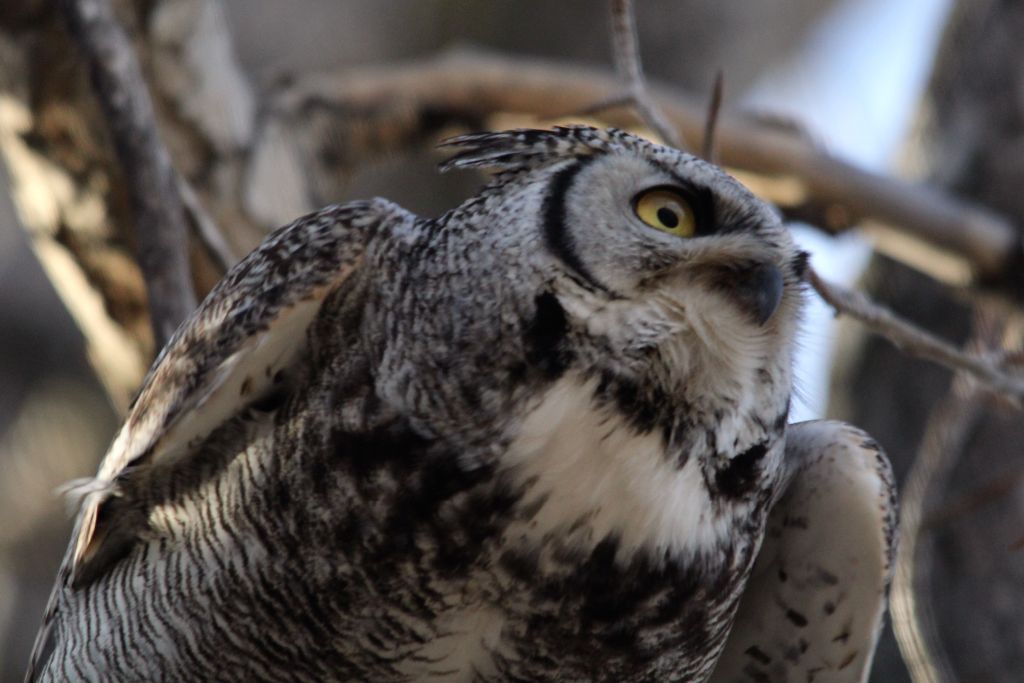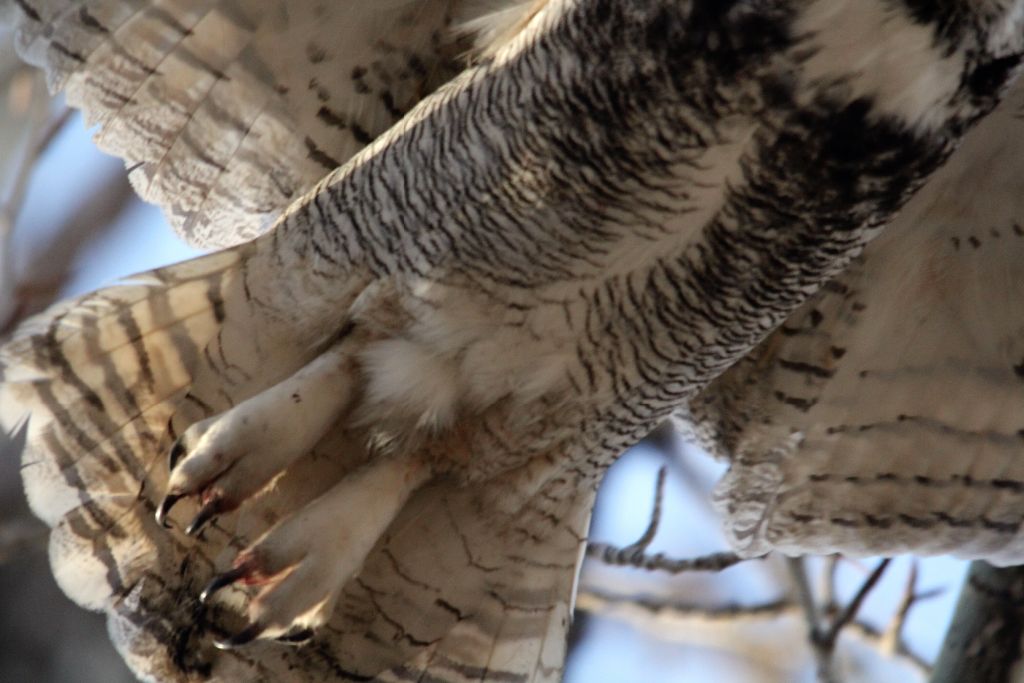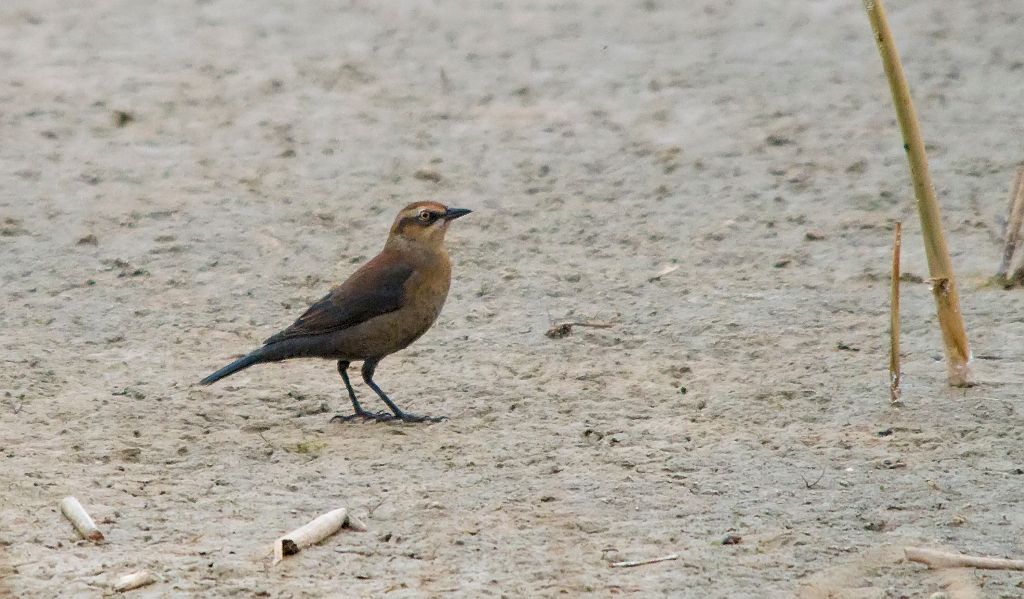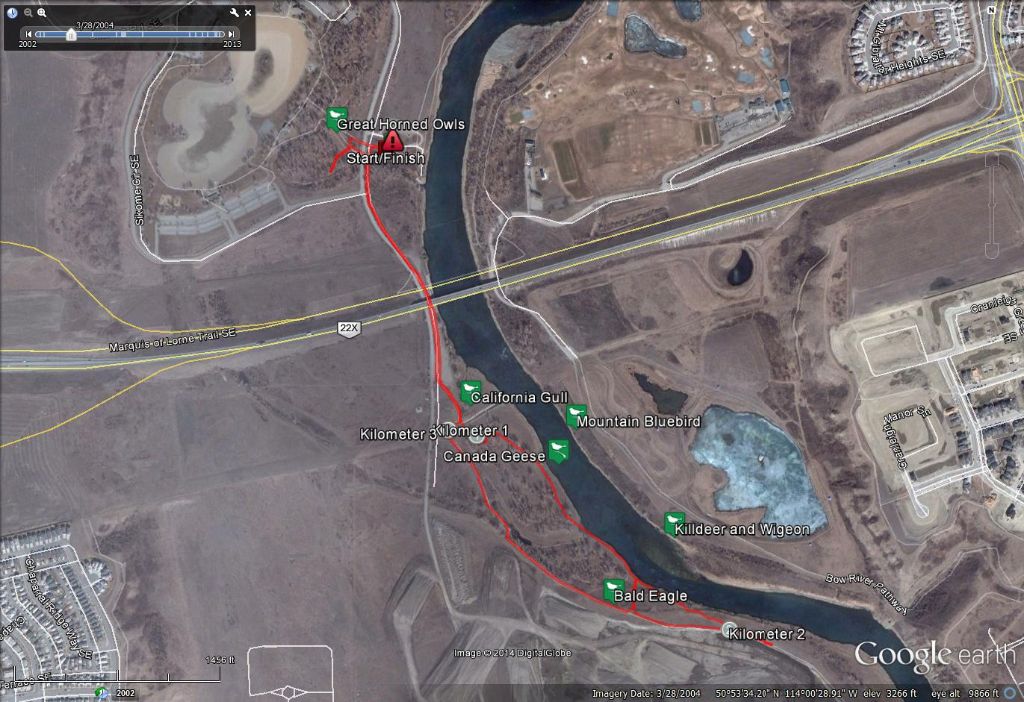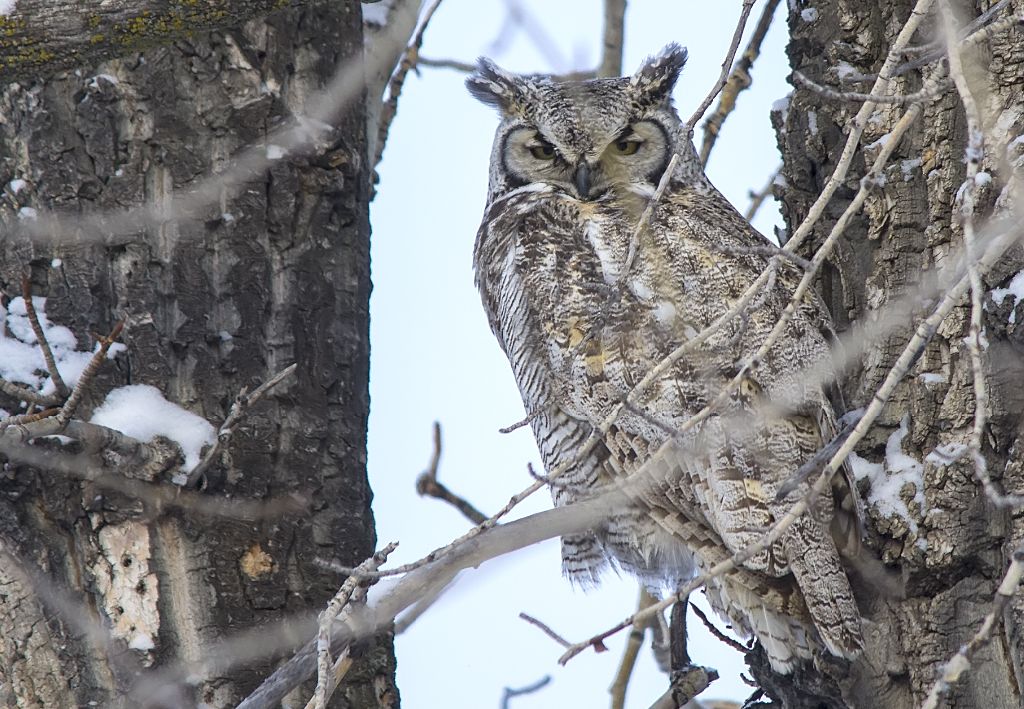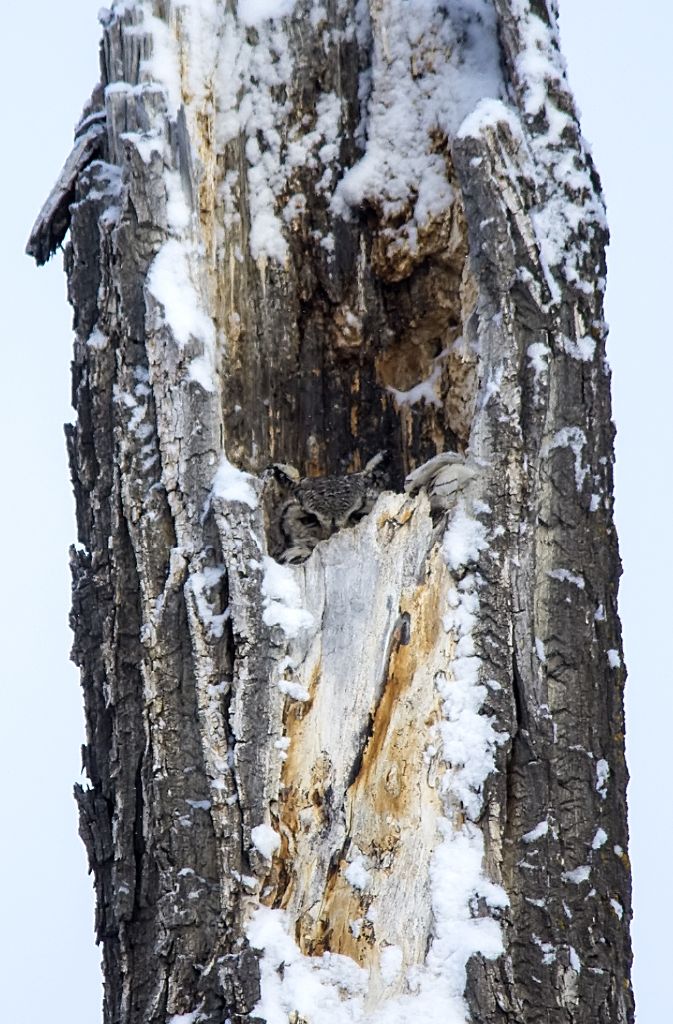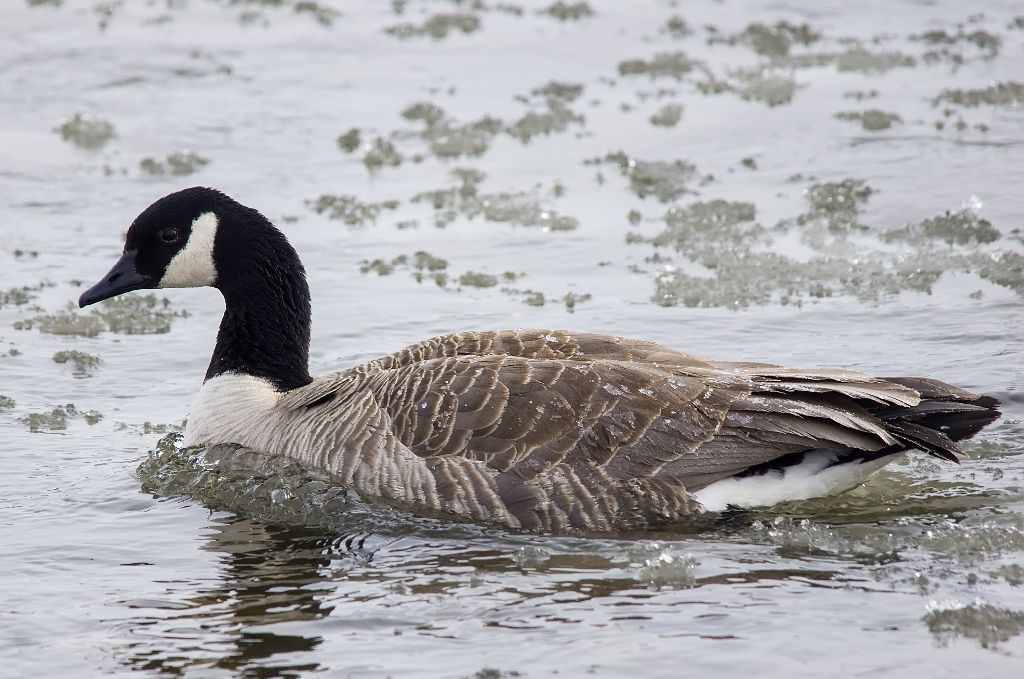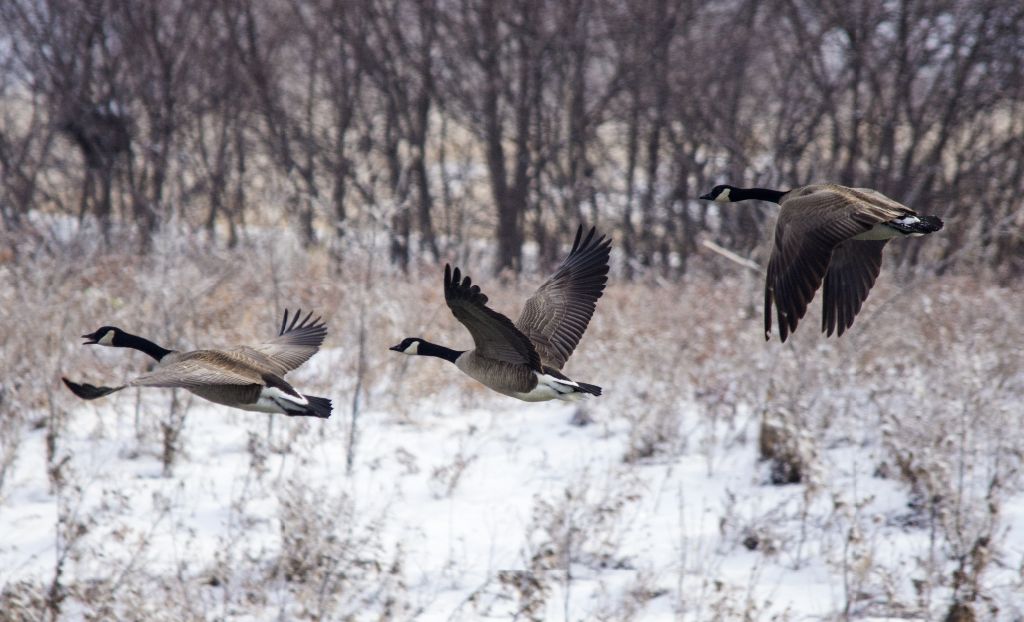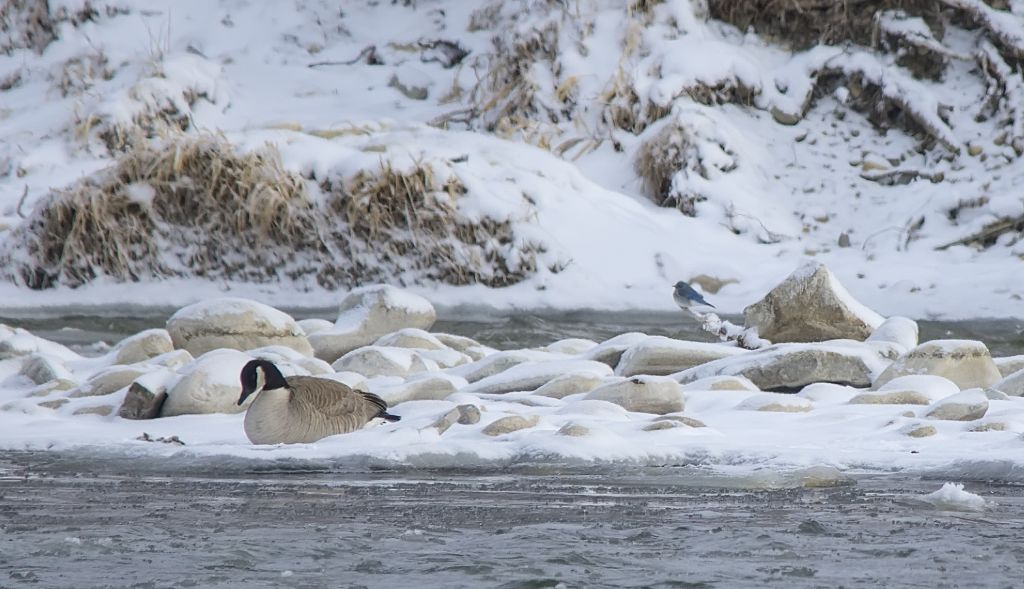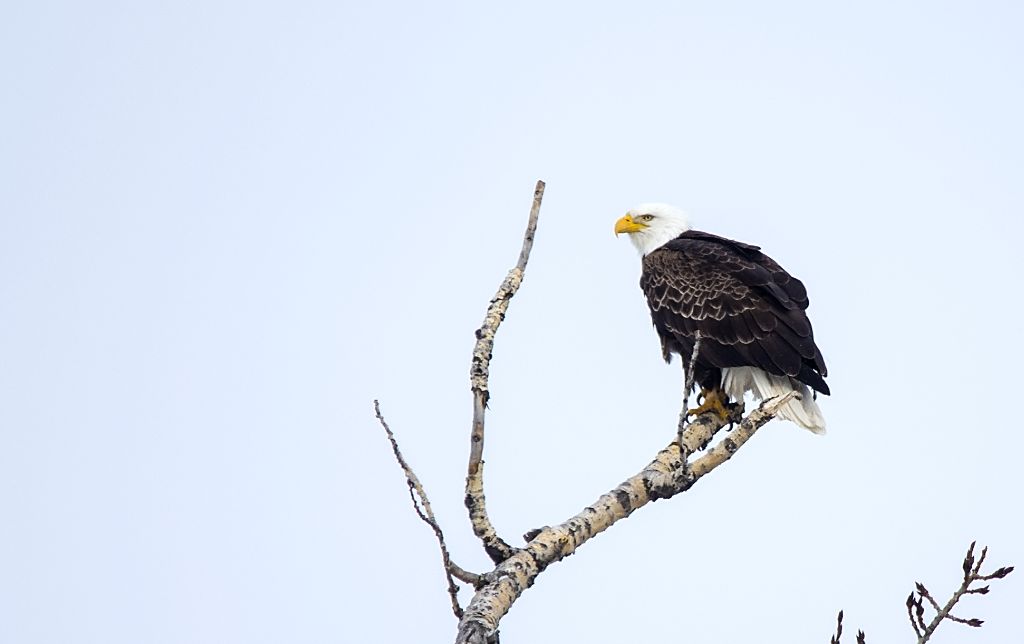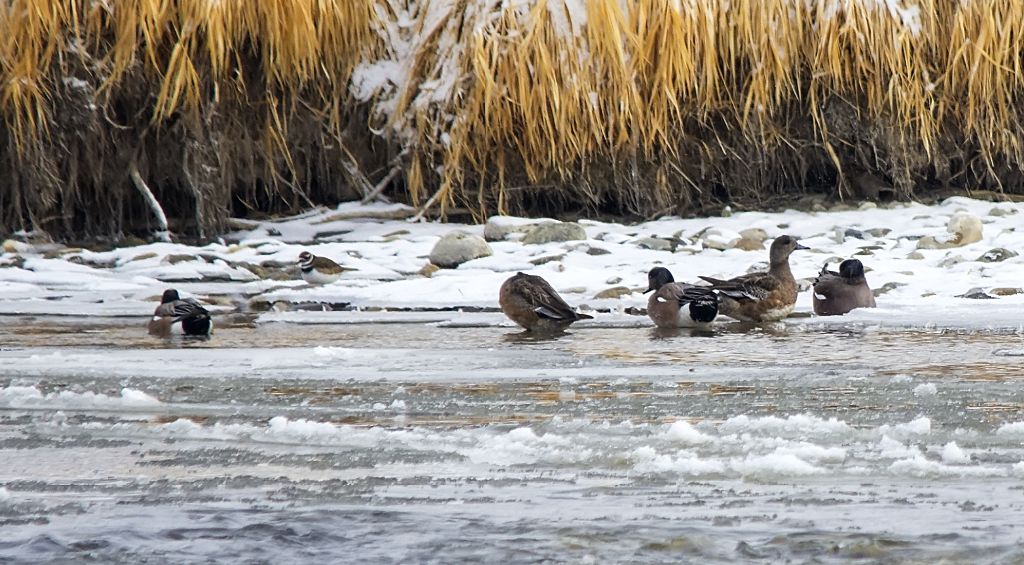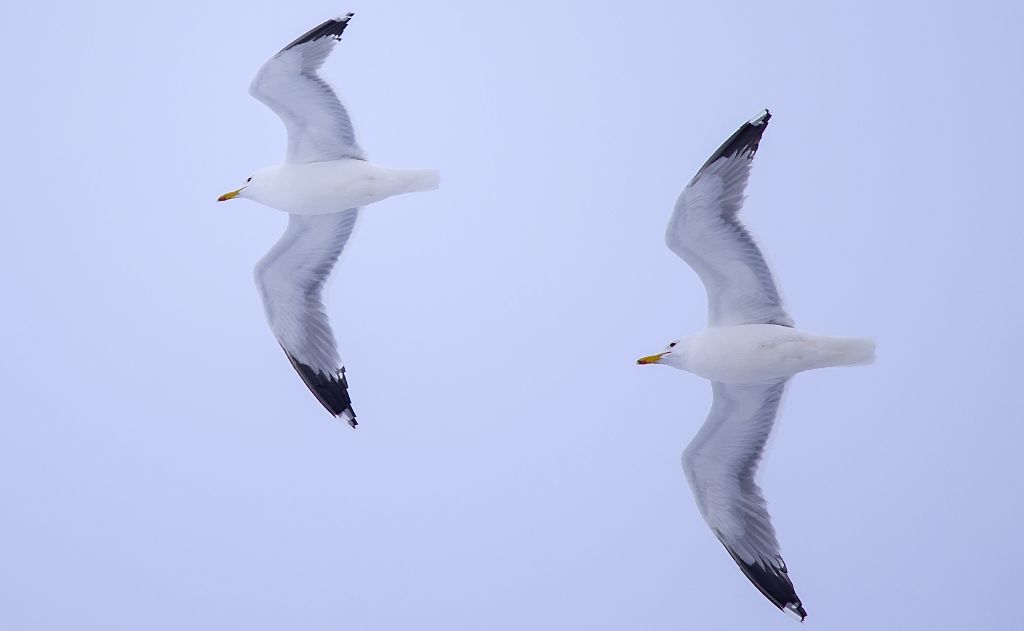Posted by Dan Arndt
I know, I know. With the title of the last two Monday morning blog posts having to do with the beginning of spring, or the end of winter, you’d think it would actually be over by now, wouldn’t you? Unfortunately, one last winter storm made our last outing with the Winter session with the Friends of Fish Creek live up to its name. Blowing snow, -12 degrees C temperatures, and a whole lot of ice on the river made it feel like an outing more in line with early January than the last day of March! The quantity of species seen though, did begin to look a bit more like spring. The number of waterfowl species that were laying over on the south end of the Bow River in Calgary certainly showed us that spring, indeed, was finally just around the corner. In fact, there was so much activity on the south end of our trek that I’ve had to blow up the usual map to give proper detail on where each species was seen!

Pine Creek Waste Water Treatment Plant area
Zoomed-out view
March 31, 2014

Pine Creek Waste Water Treatment Plant area
Zoomed-in view
March 31, 2014
While few and far between, one of the first birds that I picked out on the water last week was one of a few Cackling Geese in amongst the Canada Geese. While superficially similar, they really do stand out when sitting (or standing) near their larger cousins. In fact, it wasn’t until 2004 that the Cackling Goose was identified as its own species, with 4 subspecies identified.

Canada Geese (left) and Cackling Goose (right)
The presence of a few duck species typically associated with prairie ponds and sloughs spending their time on the river is also another sure sign of a changing of the seasons. Both the Northern Pintail and Northern Shoveler were around in good numbers, but not too close. Even a single Tundra Swan flew down onto the river while we watched in awe.

Tundra Swan
March 31, 2014

Northern Pintail
March 31, 2014

Northern Shovelers
March 31, 2014
Our first real good looks at the first migrant shorebirds to come through were along this stretch of river. These Killdeer are really quite hardy little birds. It’s no wonder they can be so numerous throughout the Calgary area!

Killdeer
March 31, 2014
In addition to the migrant waterfowl and shorebird species, there were also a couple of predatory birds around. A Merlin and Northern Goshawk made passes over us almost one right after the other, and we were treated to the disjointed yet beautiful song of this calling Northern Shrike for at least ten minutes before it was flushed by some dog walkers getting a bit too close.

Northern Shrike
March 31, 2014
Our first good looks at Herring Gulls this season were also along this stretch, many of which flew quite close to us, and in some cases, seemed to be just as curious about us as we were of them!

curious Herring Gull
March 31, 2014

Herring Gull in flight
March 31, 2014
I mentioned Killdeer earlier, and we did come across a much larger group of them, but only thanks to the eagle eyes of Gus Yaki, which he had on loan from an eagle who decided to sleep in that day. Can you spot the Killdeer in this picture? (Hint: There are five Killdeer in this image.)

Killdeer camouflage
March 31, 2014
My first sighting of the next species of the day happened out on Vancouver Island over Christmas of 2013, and despite many trips out last spring in search of this species, and despite their relative abundance here in the spring migration, this was my first Eurasian Wigeon in Alberta. Again, a nice bird to see at the best of times. He seemed to be having a bit of a spat with his American relatives though…

Eurasian and American Wigeon
March 31, 2014

Eurasian and American Wigeon
March 31, 2014
We did also have a nice close look at a Redhead a bit further upstream, before things seemed to get a little bit too far off in the snow to get any good images, and yet, we did seem to have some Common Mergansers stalking us as we headed back up towards the start of our journey.

Redhead
March 31, 2014

Canada Goose (left) and Common Mergansers (right)
March 31, 2014
And that was it for our last week of the Winter Birding Course with the Friends of Fish Creek!
With the start of our Spring course next week, I’ll definitely be trying to not duplicate species that I get photos of each week, much like I tried to last year, with relatively good success.
Have a great week, and until next Monday, Good Birding

